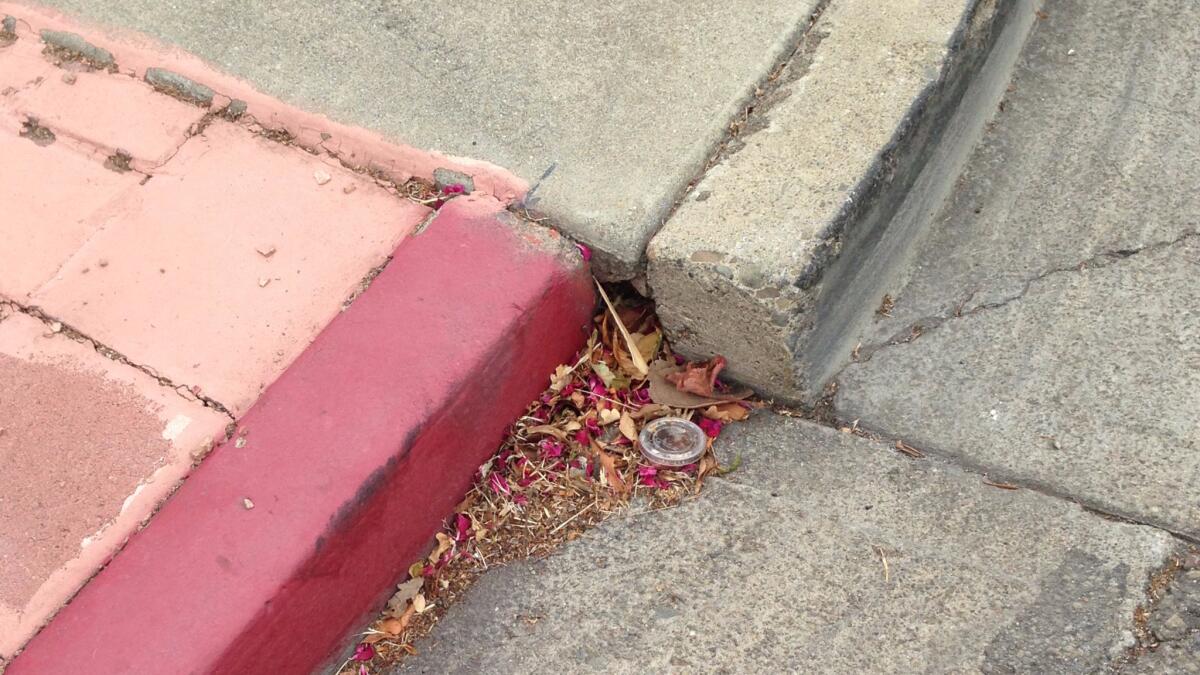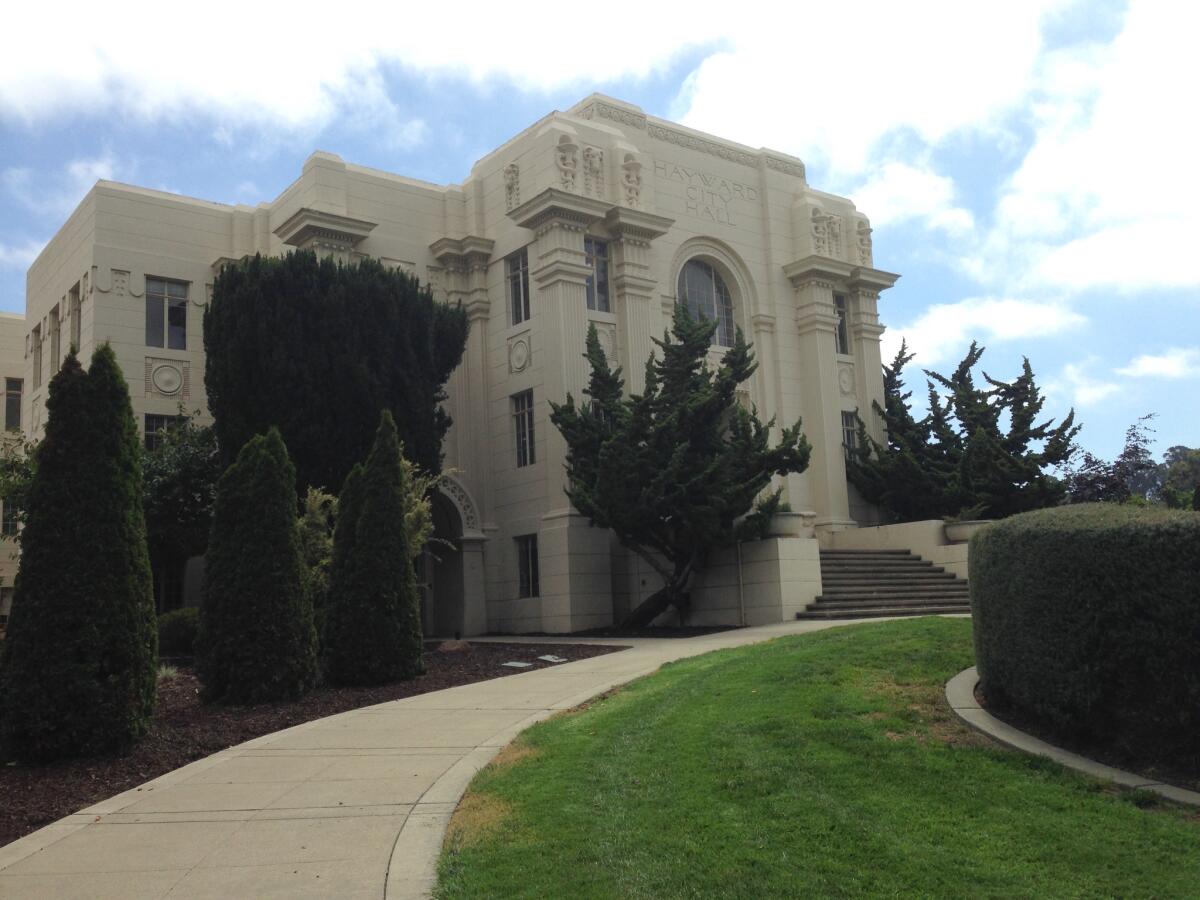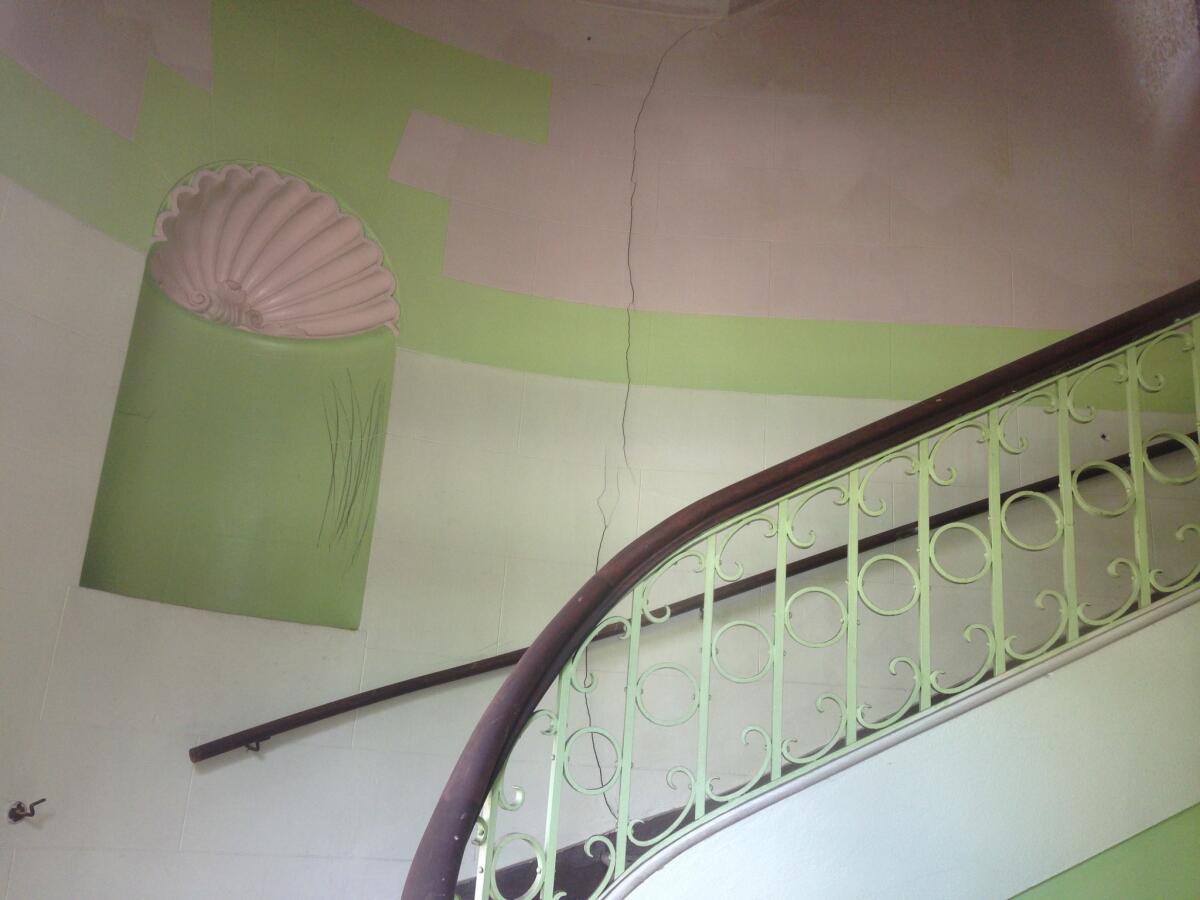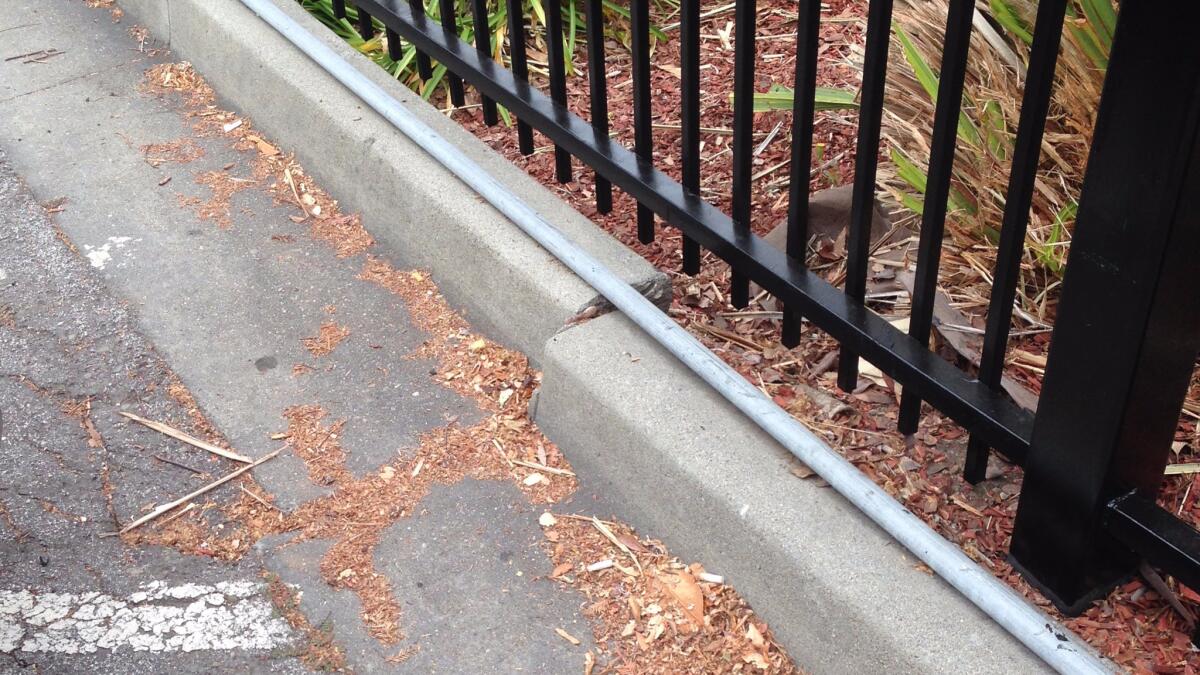The ‘Holy Grail’ for earthquake scientists has been accidentally destroyed
- Share via
For nearly half a century, thousands trekked to Rose and Prospect streets to behold a slice of sidewalk that, by conventional standards, had no curb appeal.
Pulled apart so that it no longer aligned, the humble curb wasn’t much to look at. But for earthquake scientists, it was a kind of Holy Grail, perfectly illustrating the seismic forces at work underneath this Bay Area neighborhood.
Since at least the 1970s, scientists have painstakingly photographed the curb as the Hayward fault pushed it farther and farther out of alignment. It was a sharp reminder that someday, a magnitude 7 earthquake would strike directly beneath one of the most heavily populated areas in Northern California.
Then, one early June day, a city crew decided to fix the faulty curb — pun intended. By doing what cities are supposed to do – fixing streets – the city’s action stunned scientists, who said a wonderful curbside laboratory for studying earthquakes was destroyed.
“They really took it out. Wow,” David Schwartz, a U.S. Geological Survey geologist, said when he clicked on a photo of the curb’s destruction. “It really was an iconic location on the Hayward fault.”
Andrew Alden, an Oakland science writer, was among the first to document the curb’s destruction.
He was invited by the U.S. Geological Survey to come to that intersection on the last Friday of June, as a scientist hoped to give emergency preparedness officials a chance “to see what a real fault looks like.”
“It’s sad. It was a real letdown,” said Alden, whose tweet and blog post about the intersection was picked up by Canadian media. “It’s really unusual to have such a clean piece of evidence right here.”
But Hayward officials said they had no idea this curb had such sacred significance for geologists.
“We weren’t aware of it,” said Kelly McAdoo, assistant city manager. She said the curb was replaced to install a wheelchair-accessible ramp at that intersection, one of about 150 to 170 such ramps that are installed every year at a cost of $3,000 each.
“Our mandate from our council is that we have safe sidewalks and accessible sidewalks for all members of our community,” she said, adding that the city might have acted differently had it known about the curb’s geological significance.
“We probably would have looked at it differently, or we would have tried to help them document it,” McAdoo said, adding that if scientists want to share information with the city about sites used to monitor seismic activity, “we’d be happy to talk with them” to see whether there’s a way to alert city crews about their geologic significance.
But she said the city has a responsibility to “maintain safe streets and roads. When you’ve got a curb that’s offset, we probably would eventually want to fix it and see if there’s some other way to monitor seismic safety over time.”
The Times sent McAdoo a link to photos showing the curb offset growing since the 1970s, and she said the initial reaction among some employees was, “Look at how offset the curb is. We need to fix that.”
The curb was once straight, running perpendicular to the Hayward fault, which runs in a north-south direction. But over the years, the eastern half of the curb got pulled south, while the other side got pulled north.

The intersection has long been watched with reverence. A website called geologyfieldtrips.com features scanned photos showing the same curb in 1971 — already displaying the telltale signs of being pulled apart. By 1987, the curb was completely offset, courtesy of a fault that geologists say is one of the Bay Area’s most worrisome.
The Hayward fault courses right underneath Berkeley, Oakland, Hayward and Fremont and produces a large earthquake, on average, every 160 years, with a margin of error of about 80 years. It has been 148 years since the Hayward fault last ruptured, unleashing a huge earthquake.
“We’re kind of in the range where something could happen at any time,” Schwartz said.
On its website, the USGS calls the Hayward fault the region’s “tectonic time bomb,” which could “cause hundreds of deaths, leave thousands homeless and devastate the region’s economy.”
On top of the Hayward fault, Schwartz said, sits “two million people who directly live on top of it. It sits geographically in the center of the Bay Area. There’s a tremendous amount of infrastructure built up on it — water systems, gas, electrical, BART crosses it — so a large event on that fault is like hitting the bullseye on a target.”
Famously, the Hayward fault’s ongoing movement forced Hayward to shutter its historic city hall, which remains standing and is slowly being torn up by the fault’s movement.


There are other, more subtle signs of the Hayward fault’s influence in the city’s downtown. Some curbs and sidewalks have bends or cracks in them that geologists know are clear evidence of the fault’s movement. Some cracks travel up vertical structures, including buildings where people work or live.

“If it was up to us, we would put signs up on all of these active faults,” showing people where they’re crossing the Hayward fault or the San Andreas fault, Schwartz said. But he doubted civic leaders would welcome that idea: “I think they’d think it’s negative publicity. But I think it’s informative to the public.”
Schwartz said he would’ve liked it if Hayward had kept the offset curb there, “as a visual reminder to people about the Hayward fault.”
But he said no matter how pristine the famous curb looked after the city fixed it, the Hayward fault will make sure it doesn’t stay that way.
“The fault,” Schwartz said, “will have its revenge.”
ALSO
What are the odds of dying in an earthquake?
Deadly but little-known: Why scientists are so afraid of the San Jacinto fault
Sign up for Essential California
The most important California stories and recommendations in your inbox every morning.
You may occasionally receive promotional content from the Los Angeles Times.








